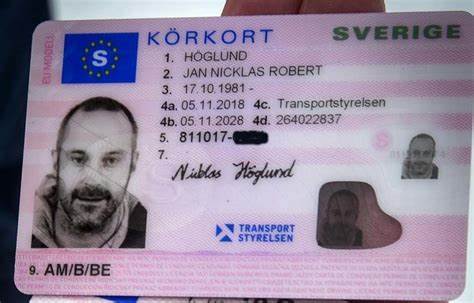댓글 0
등록된 댓글이 없습니다.

Driving is a fundamental ability for numerous, offering the flexibility to travel where and when you want, typically making life more hassle-free and enjoyable. However, getting a driving license is a process that requires understanding, perseverance, and adherence to legal treatments. This guide aims to provide a comprehensive overview of the actions one must follow to legally acquire a driving license, highlighting crucial factors to consider and regularly asked concerns to ensure a smooth and hassle-free experience.
Before diving into the application process, it's crucial to understand the fundamental requirements and kinds of driving licenses offered. Driving laws vary substantially from country to nation, and even within various states or provinces within the exact same nation. Typically, there are several types of driving licenses, including:
The very first step in acquiring a driving license is to investigate the specific requirements in your location. Go to the main site of your local Department of Motor Vehicles (DMV) or comparable agency to discover detailed details about the licensing procedure, including age constraints, required documents, and charges.
Each jurisdiction has its own set of documents that must be sent to apply for a driving license. Commonly needed documents consist of:
Many states and Köpa taxilicens Körkort - your domain name - nations require new chauffeurs to complete a driver's education course. These courses are created to teach the rules of the roadway, traffic laws, and safe driving practices. They can be completed online or in a classroom setting and frequently include both theoretical and practical elements.
When the needed documents is ready and the driver's education course is finished, the next action is to get a student's authorization. This usually involves checking out the DMV or submitting an application online. You will likewise need to pass a written test that covers traffic laws and driving understanding.
With a student's authorization, you can start practicing driving under the guidance of a certified grownup. This is an important step in building your confidence and abilities behind the wheel. It's also crucial to get experience in different driving conditions, such as night driving, highway driving, and driving in harsh weather condition.
After acquiring adequate driving experience, you can schedule a driving test with the DMV. The test will examine your ability to securely operate a vehicle and follow traffic laws. You will need to bring an appropriately registered and guaranteed automobile to the test, and the examiner will assess your driving skills on a predetermined path.
If you pass the driving test, you will typically receive a provisional license. This license may feature restrictions, such as a curfew or a limit on the variety of passengers you can have in the car. These restrictions are developed to lower the danger of mishaps and assist new drivers accustom to the roadway.
When you have held a provisional license for the required duration and satisfied any extra requirements, you can upgrade to a full driver's license. This procedure typically includes a basic application and may require a retest or extra documentation.
A: The minimum age differs by jurisdiction. In the United States, it normally varies from 15 to 16 years of ages. In the UK, the minimum age is 17. Examine your local DMV website for specific details.
A: Some jurisdictions enable you to complete parts of the application procedure online, such as filling out types and scheduling tests. Nevertheless, you will generally require to visit a DMV workplace face to face to send required documents and take the driving test.
A: If you fail the driving test, you can typically retake it after a specific duration. This period differs by area, but it is typically a few weeks. It's a great concept to practice more before retaking the test to enhance your possibilities of success.
A: No, a student's authorization normally needs you to be accompanied by a licensed adult, usually over 21 years of ages, who is seated in the front guest seat.
A: Yes, most jurisdictions need a vision test to guarantee that you can securely operate a car. You can normally take this test at the DMV or with an approved eye doctor.
A: The time needed to obtain a complete driver's license differs depending upon your jurisdiction and the specific steps included. Usually, it can take a number of months, consisting of the time needed to complete a driver's education course, hold a learner's license, and pass the driving test.
A: It depends upon the restrictions positioned on your provisionary license. Some provisionary licenses enable you to drive for work, while others might have specific restrictions. Examine your license for information or get in touch with the DMV for explanation.
A: A learner's authorization is the very first stage of the licensing process and permits you to drive just under supervision. A provisionary license, on the other hand, grants you more driving opportunities but might still have some restrictions, such as a curfew or passenger limits.
A: No, you normally need a complete driver's license before requesting a CDL. A CDL is a customized license that requires additional training and testing, and it is just released to those who have demonstrated the ability to securely operate a basic automobile.

A: If you lose your driving license, you ought to report it to the DMV and get a replacement. You might need to provide evidence of identity and pay a cost. It's also a good idea to inform your insurance coverage business and any other appropriate parties.
Obtaining a driving license is a significant milestone that opens new chances and increases independence. By following the actions described in this guide and staying notified about local laws and requirements, you can guarantee a smoother and more successful licensing process. Bear in mind that driving is a serious obligation, and putting in the time to discover and practice is necessary for your security and the safety of others on the road.
0등록된 댓글이 없습니다.